TABLE OF CONTENTS
PROJECTS
SUNSHINE DISHCLOTH
SIMPLE MOSS STITCH DISHCLOTH
INCREDIBLY EASY KNIT DISHCLOTH
PATTERN BASICS
SLIP STITCH
KNITTED CAST-ON
LONG TAIL CAST-ON
CABLE CAST-ON
KNIT STITCH
PURL STITCH
BIND OFF
THREE NEEDLE BIND OFF

EDITOR’S NOTE
As managing editor of I Like Knitting magazine, let me be the first to say welcome! I’ve been a yarn lover for most of my life (I was six years old when my grandma showed me how to make my own scarf) and I can honestly say that I have the best job in the world.
While my role does consist of emailing designers and writing up magazine contracts, I count myself incredibly lucky to be able to look at gorgeous projects — from blankets and shawls to the cutest knitting scarves and hats — every day.
Since you are new to our magazine, I truly hope you enjoy this free mini issue: Let’s Dish: 3 Free Knit Dishcloth Patterns Perfect for Your Kitchen, that will offer a tiny taste of what the I Like Knitting community can offer you.

About Us
Published six times a year, our magazines contain 25+ new and exclusive knitting patterns in each issue!
So start building your library of knitting blankets, knitting scarf patterns, knitting sweater patterns and more all on your tablet or desktop, and all accessible with an active club membership. Every issue contains 25 to 30 exclusive knitting designs.
Take the next step in your knitting and join our community of talented readers who live to learn new techniques and love to knit!

BEHIND THE SCENES

I Like Knitting editors Nicola Prybell and Caitlin Eaton, hard at work styling projects for a new issue of our bi-monthly magazine.
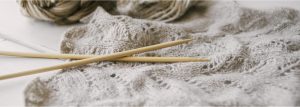
PATTERNS
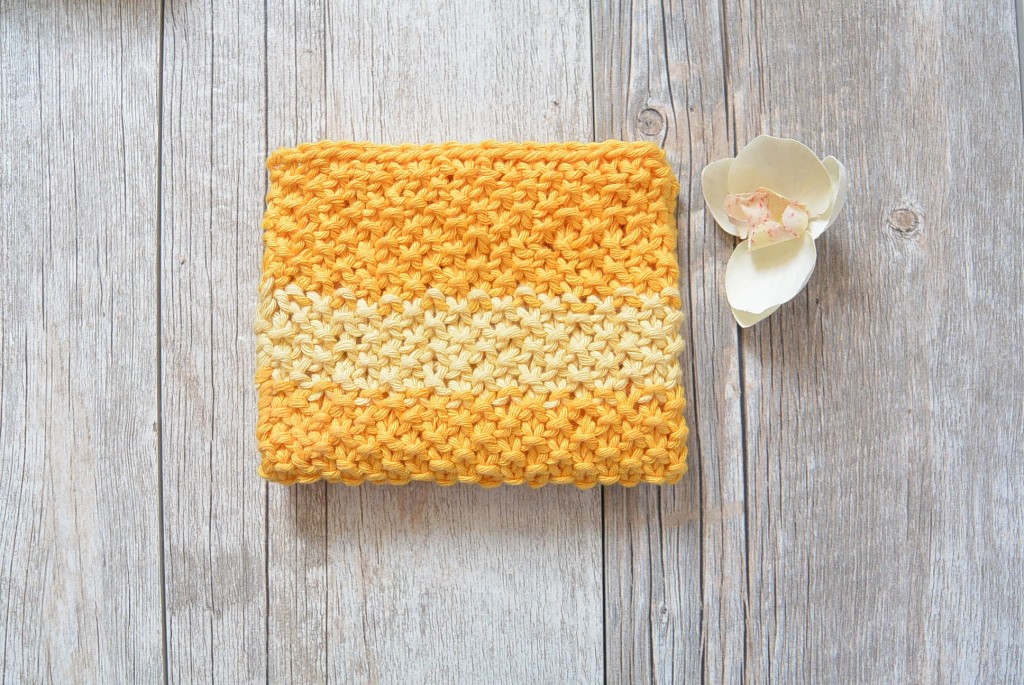
SUNSHINE DISHCLOTH
by Jessica Potasz
During the warmer months of the year, it’s nice to have easy, small projects to throw in your bag to take the pool or on vacation. This is a super simple pattern that results in a pretty washcloth that you could be used to brighten up a bathroom or kitchen. While I’ve used shades of yellow here, you can certainly use whatever colors that you prefer.
Skill Level: Beginner
Size: The dishcloth/washcloth should measure approximately 9”X9” but may be slightly different depending on how tight or loosely you knit.
MATERIALS
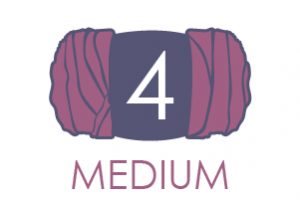 Yarn: One skein of Drops Paris 100% Cotton in Strong Yellow or comparable worsted weight cotton yarn (Main color). Small amount of Drops Paris 100% Cotton in Light Yellow or comparable worsted weight yarn (Contrast color)
Yarn: One skein of Drops Paris 100% Cotton in Strong Yellow or comparable worsted weight cotton yarn (Main color). Small amount of Drops Paris 100% Cotton in Light Yellow or comparable worsted weight yarn (Contrast color)
Needles: US Size 7 Knitting Needles
Notions: Tapestry Needle to weave in ends.
PATTERN
Cast on 37 stitches
Row 1: K1, p1 across row
Repeat row 1 until piece measures 6”
Change color to light yellow
Repeat row 1 for 1”
Change color to main color
Repeat row 1 for 2”
Cast off
Weave in ends
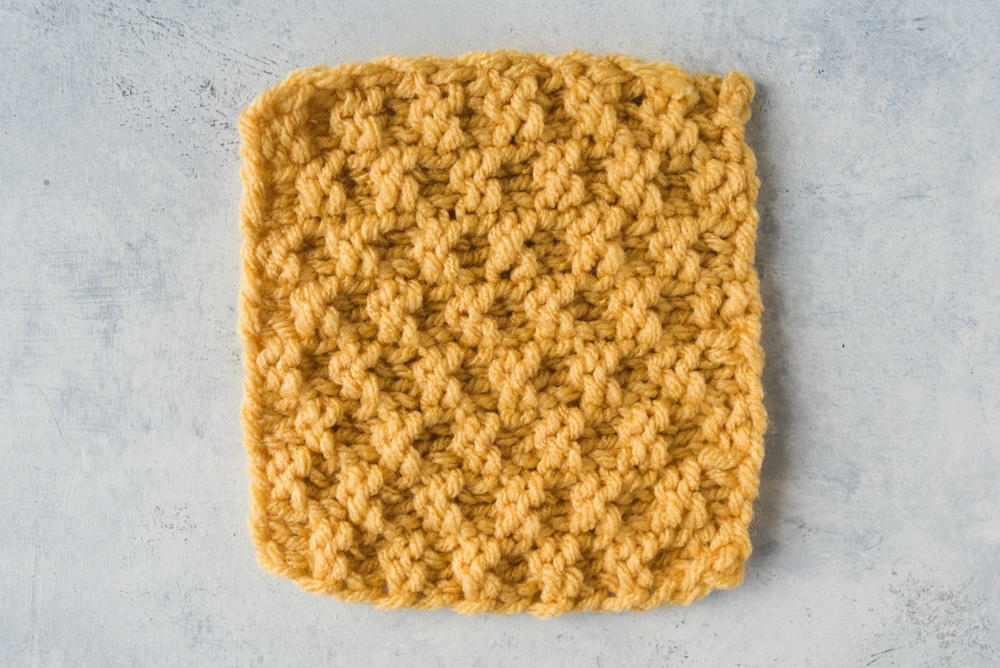
SIMPLE MOSS STITCH DISHCLOTH
by Heidi Gustad
Ready for another super cute yet easy dishcloth pattern? This Simple Moss Stitch Dishcloth creates the perfect checkerboard pattern to make a super cute and usable dish cloth. If you’re a beginner knitter interested in graduating beyond stockinette stitch and garter stitch, this moss stitch knitting pattern is a great option. Moss stitch adds a lovely texture to your projects without being overwhelming or overly complicated. Check out the full pattern below to learn how to make this free knit dishcloth pattern.
Skill Level: Beginner
Size: About 5×5 inches.
Gauge: Not important for this project.
MATERIALS
 Yarn: Any Medium or worsted-weight yarn
Yarn: Any Medium or worsted-weight yarn
Needles: US size 7-9
PATTERN
Cast on 32 stitches
Row 1: knit 2, purl 2
Row 2: knit 2, purl 2
Row 3: purl 2, knit 2
Row 4: purl 2, knit 2
Rows 5 – 40: Repeat rows 1 – 4, 9 times
Rows 41 – 42: Repeat rows 1 and 2
Row 43: purl 2, knit 2
Bind off in purl 2, knit 2
Cut yarn and weave in ends

INCREDIBLY EASY KNIT DISHCLOTH
by Heidi Gustad
You can never have too many dishcloths right? This Incredibly Easy Knit Dishcloth is an awesome knitting pattern that you can whip up in just one hour. Dishcloths can often get a lot of wear and tear so making your own knit dishcloths can save money. Plus, you can use whatever yarn you would like to make your DIY dishcloth as durable as possible. Check out this video tutorial to see just how easy it is to put together this multicolored dishcloth that all your friends will believe is store bought!
Skill Level: Beginner
Size: Approximately 9×9 inches
Gauge: Not important for this project
MATERIALS
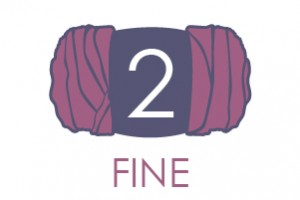 Yarn: Sport weight yarn in two contrasting colors
Yarn: Sport weight yarn in two contrasting colors
Needles: US size 3-5
PATTERN
CO 34 sts Clr A.
Row 1-2: Clr A: k across.
Row 3: Clr B: k across.
Row 4: Clr B: k1, (k2tog, yo, 1), rpt ( to )
across.
Row 5-6: Clr B: k across
Rpt rows 1-6 until nearly to desired
length.
Row 7-8: Clr A: k across.BO all sts.
MASTER ABBREVIATIONS
Beg – begin/beginning
Bet – between
BO – bind off
Cn – cable needles
CO – cast on
Cont – continue
Dec – decrease
Dpn – double pointed needles
Fl – front loops
Inc – increase
K – knit
K2tog – knit 2 stitches together
Kwise – knitwise
Lp(s) – loop(s)
M1 – make one stitch
M1 p-st – make one purl stitch
P – purl
Pm – place marker
Pop – popcorn
P2tog – purl 2 stitches together
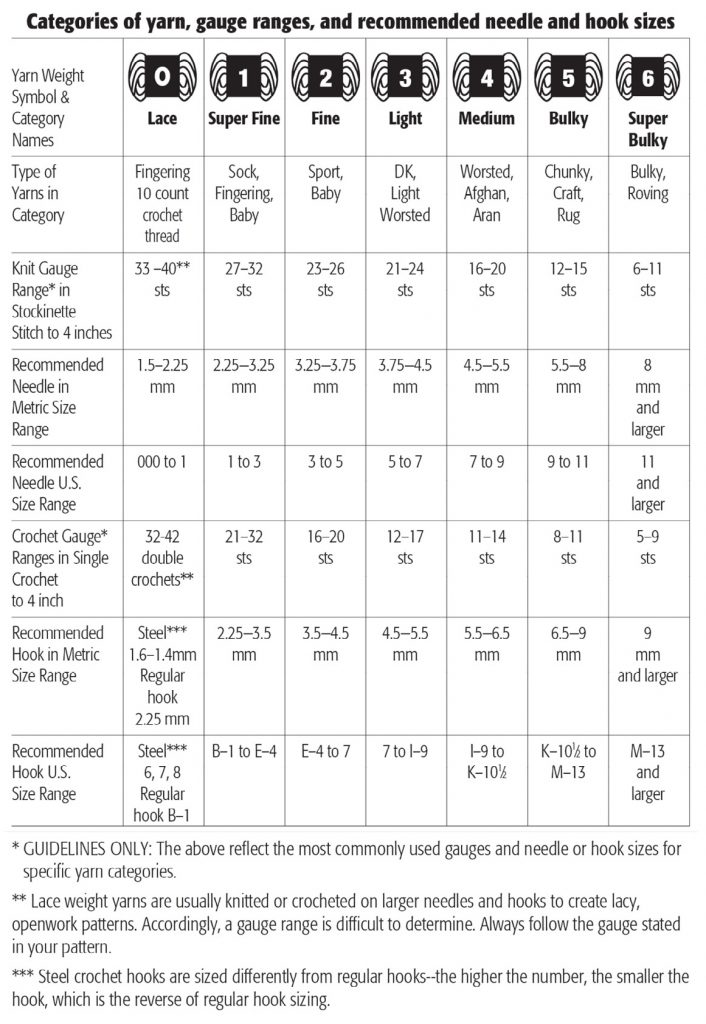
Pwise – purlwise
Rem – remain/remaining
Rep – repeat(s)
Rev St st – reverse stockinette stitch
Rnd(s) – round(s)
RS – right side
Sk – skip
Skp – slip, knit, pass stitch over—one stitch decrease
Sk2p – slip 1, knit 2 together, pass slip stitch over the knit 2 together—two stitches have been decreased
Sl – slip
Sl1k – slip 1 knitwise
Sl1p – slip 1 purlwise
Sl st – slip stitch(es)
Ssk – slip, slip, knit these 2 stitches together—a decrease
St(s) – stitch(es)
St st – stockinette stitch
Tbl – through back loop
Tog – together
WS – wrong side
Wyib – with yarn in back
Wyif – with yarn in front
Yfwd – yarn forward
Yo – yarn over
Yrn – yarn around needle
Yon – yarn over needle
[ ] or ( ) – work instructions within brackets as many times as directed*– repeat the instructions following the single asterisk as directed
* * – repeat instructions between asterisks as many times as directed or repeat from a given set of instructions
PATTERN BASICS
SLIP STITCH
Before starting the slip knot, decide which method of casting on you want to try. If you choose the long-tail cast-on method, leave approximately an inch for every stitch that you’re about to place on the needle. For the knitted cast-on, leave eight to ten inches between the end of the yarn and the slip knot.
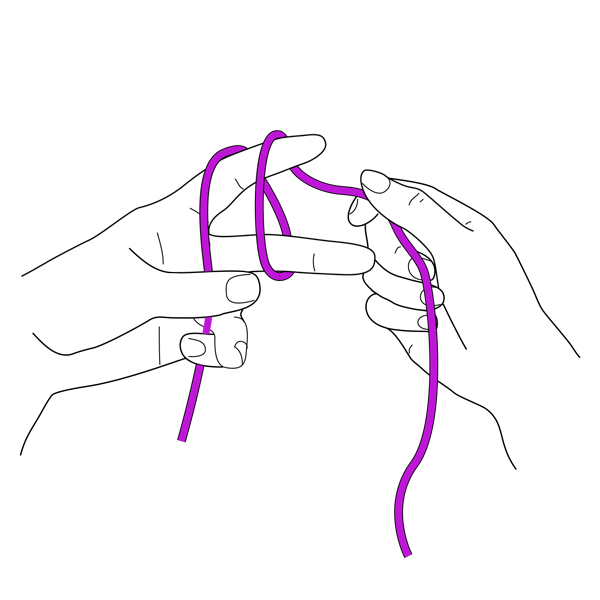 1 Hold the short end of the yarn in your palm with your thumb. Wrap the yarn around the index and middle fingers twice.
1 Hold the short end of the yarn in your palm with your thumb. Wrap the yarn around the index and middle fingers twice.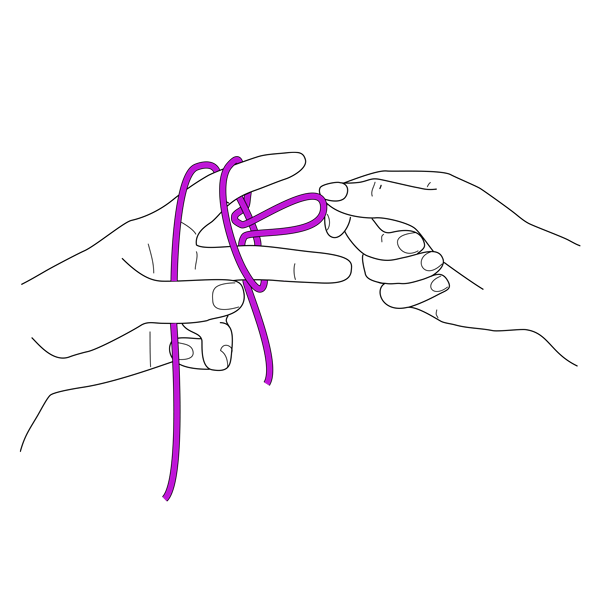 2 Pull the strand attached to the ball through the loop between your two fingers to form a new loop.
2 Pull the strand attached to the ball through the loop between your two fingers to form a new loop.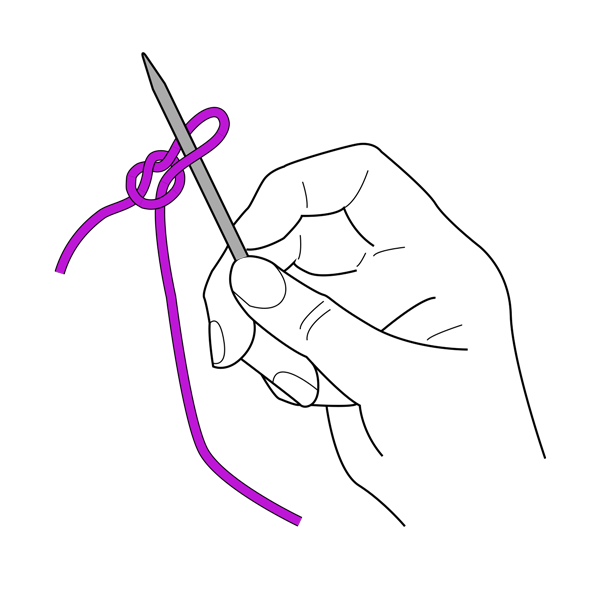 3 Place the new loop on the needle and tighten it by pulling on both ends of the yarn to form the slip knot. You are now ready to begin casting-on.
3 Place the new loop on the needle and tighten it by pulling on both ends of the yarn to form the slip knot. You are now ready to begin casting-on.KNITTED CAST-ON
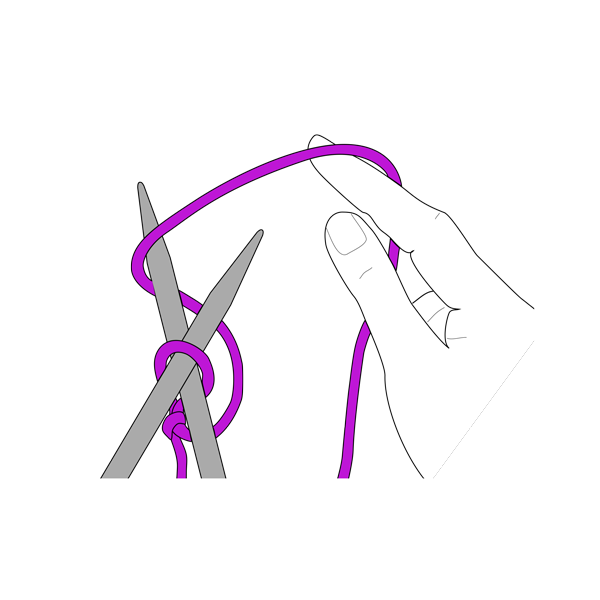 1 Make a slip knot on the left needle. Insert the right needle knitwise into the stitch on the left needle. Wrap the yarn around the right needle as if to knit.
1 Make a slip knot on the left needle. Insert the right needle knitwise into the stitch on the left needle. Wrap the yarn around the right needle as if to knit.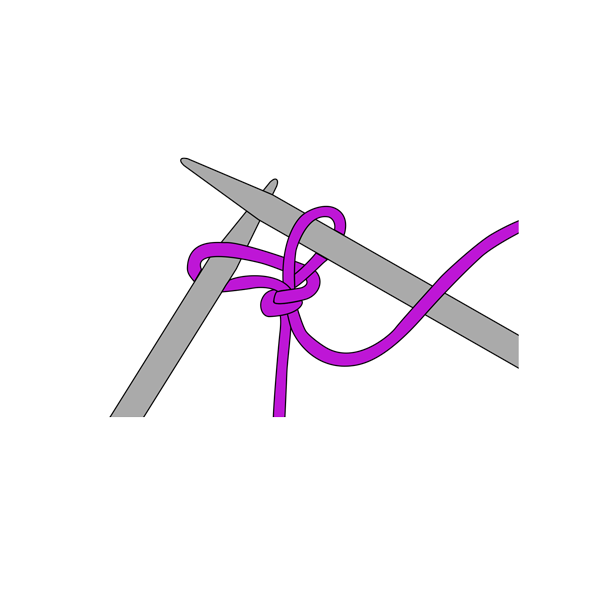 2 Draw the yarn through the first stitch to make a new stitch, but don’t drop the stitch from the left needle.
2 Draw the yarn through the first stitch to make a new stitch, but don’t drop the stitch from the left needle.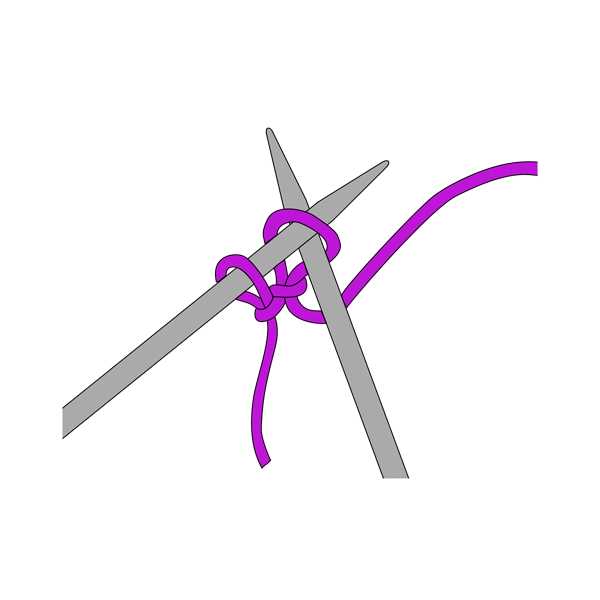 3 Slip the new stitch to the left needle as shown. Continue until all the stitches are cast on.
3 Slip the new stitch to the left needle as shown. Continue until all the stitches are cast on.LONG TAIL CAST-ON
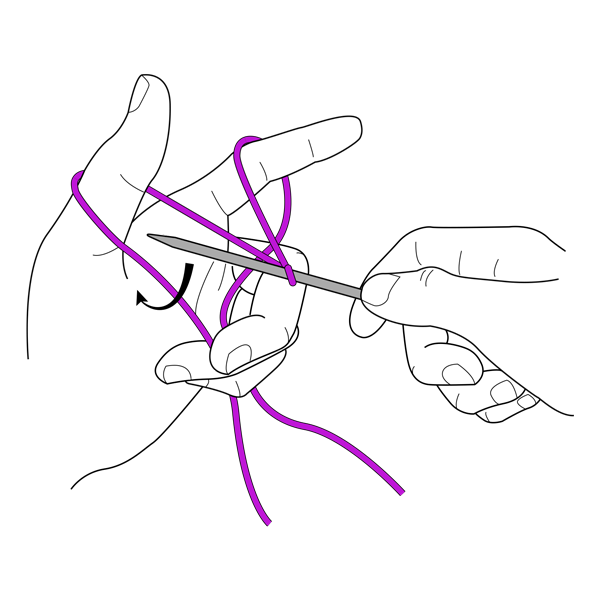 1 Make a slip knot on the right needle, leaving a long tail. Wind the tail end around your left thumb, from the front to the back. Wrap the yarn from the ball over your left index finger and secure the ends in your palm.
1 Make a slip knot on the right needle, leaving a long tail. Wind the tail end around your left thumb, from the front to the back. Wrap the yarn from the ball over your left index finger and secure the ends in your palm.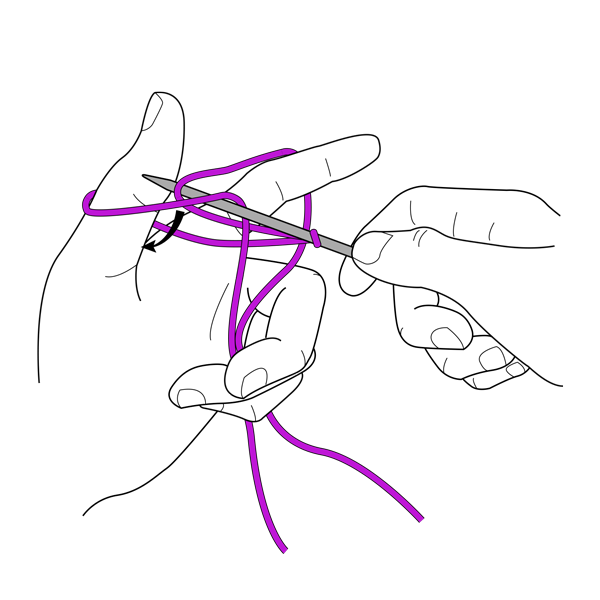 2 Insert the needle upward into the loop on your thumb. With the needle, draw the yarn from the ball through the loop to form a stitch.
2 Insert the needle upward into the loop on your thumb. With the needle, draw the yarn from the ball through the loop to form a stitch.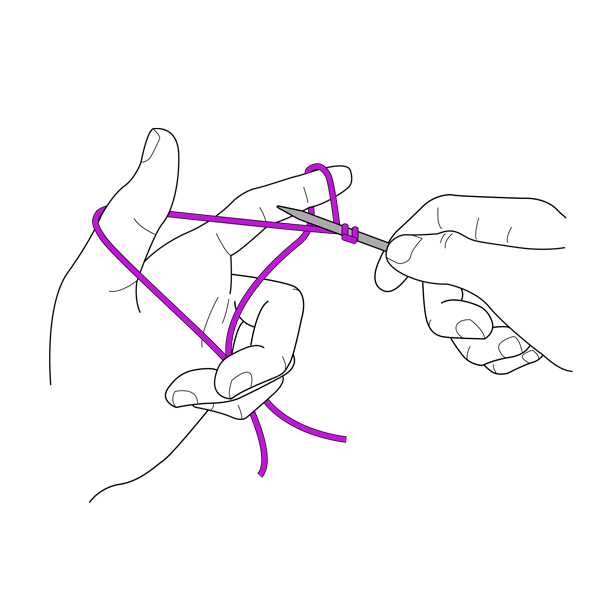 3 Take your thumb out of the loop and tighten the loop on the needle. Continue until all the stitches are cast on.
3 Take your thumb out of the loop and tighten the loop on the needle. Continue until all the stitches are cast on.CABLE CAST-ON
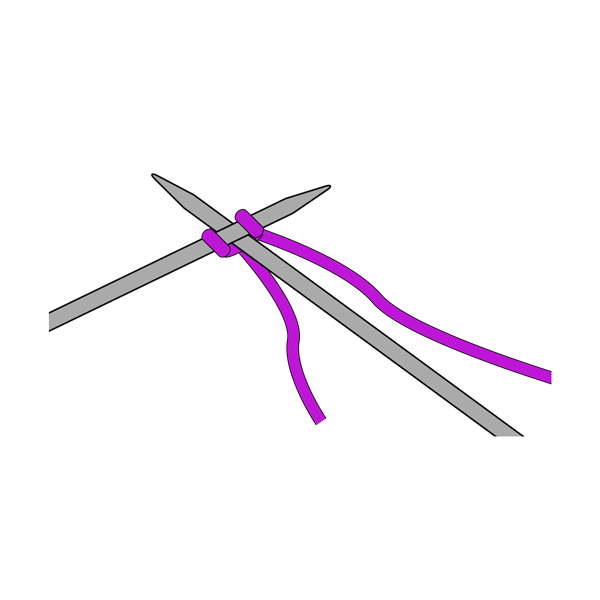 1 Cast on two stitches using the knitted cast-on method. Insert the right needle between the two stitches on the left needle.
1 Cast on two stitches using the knitted cast-on method. Insert the right needle between the two stitches on the left needle.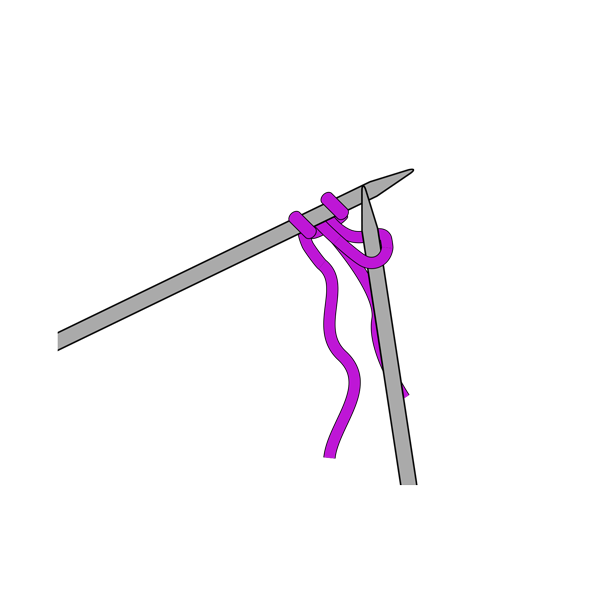 2 Wrap the yarn around the right needle as if to knit and pull the yarn through to make a new stitch.
2 Wrap the yarn around the right needle as if to knit and pull the yarn through to make a new stitch.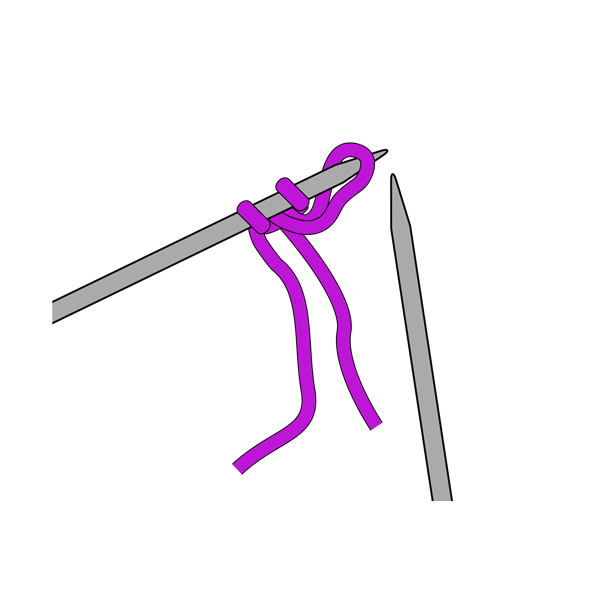 3 Place the new stitch on the left needle as shown. Continue as needed, always inserting the right needle in between the last two stitches on the left needle.
3 Place the new stitch on the left needle as shown. Continue as needed, always inserting the right needle in between the last two stitches on the left needle.KNIT STITCH
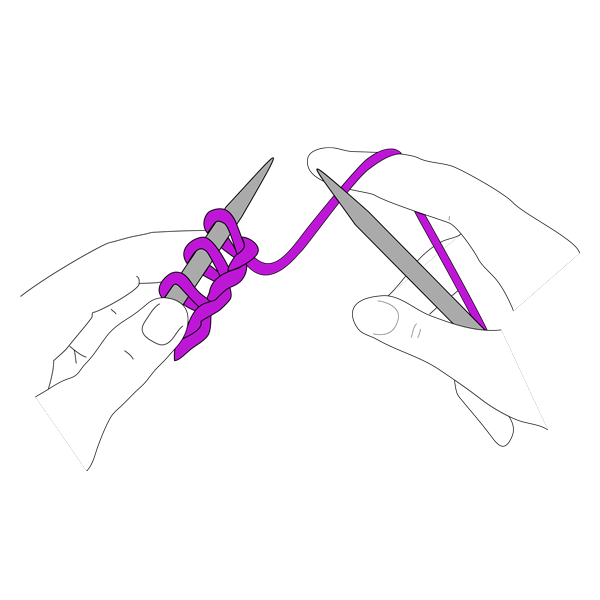 1 Hold the needle with the cast-on stitches in your left hand and the other needle in your right. Wrap the yarn around your fingers.
1 Hold the needle with the cast-on stitches in your left hand and the other needle in your right. Wrap the yarn around your fingers.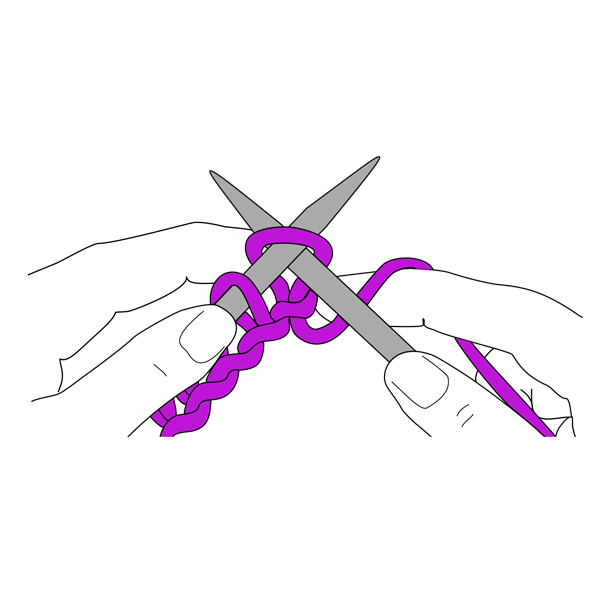 2 Insert the right needle from front to back into the first cast-on stitch on the left needle. Keep the right needle under the left and keep the yarn at the back.
2 Insert the right needle from front to back into the first cast-on stitch on the left needle. Keep the right needle under the left and keep the yarn at the back.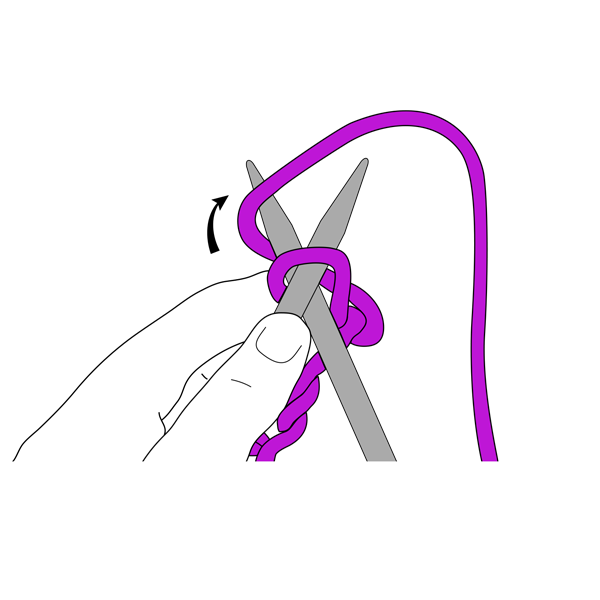 3 Wrap the yarn under and over the right needle in a clockwise motion.
3 Wrap the yarn under and over the right needle in a clockwise motion.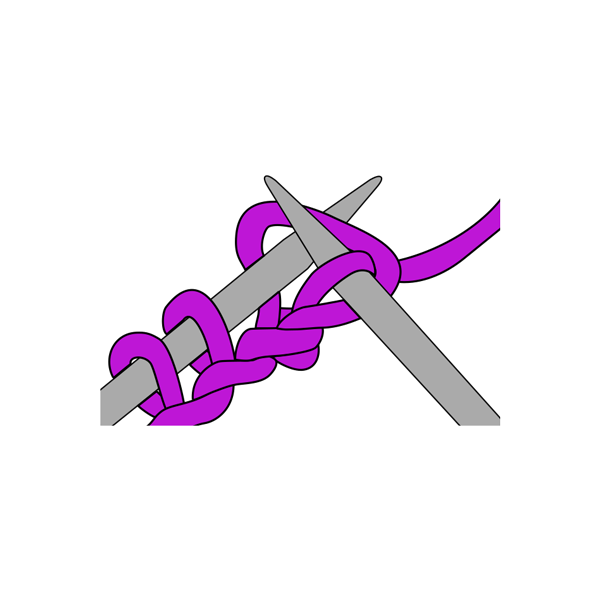 4 With the right needle, pull the yarn through the cast-on stitch.
4 With the right needle, pull the yarn through the cast-on stitch.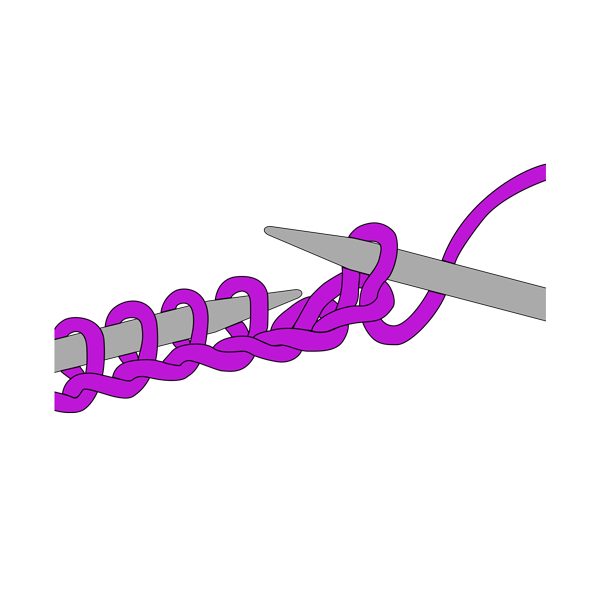 5 Slip the cast-on stitch off the left needle, keeping the newly formed stitch on the right one.
5 Slip the cast-on stitch off the left needle, keeping the newly formed stitch on the right one.PURL STITCH
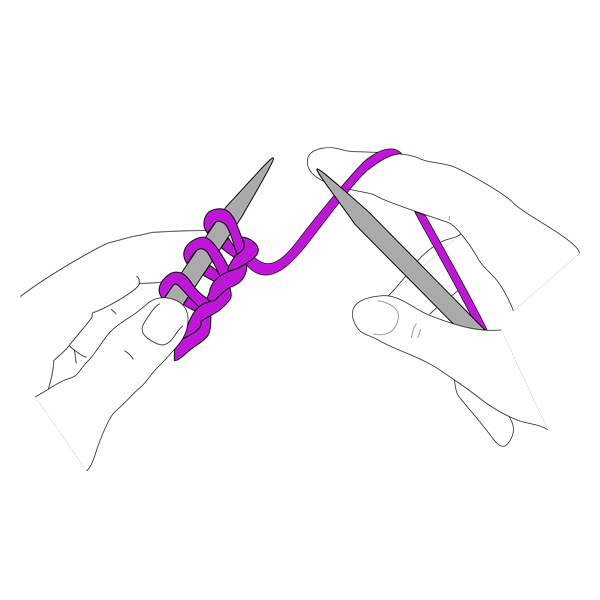 1 Hold the working needle in your right hand and the needle with the stitches in your left. The yarn is held and worked with your right hand and is kept to the front of the work.
1 Hold the working needle in your right hand and the needle with the stitches in your left. The yarn is held and worked with your right hand and is kept to the front of the work.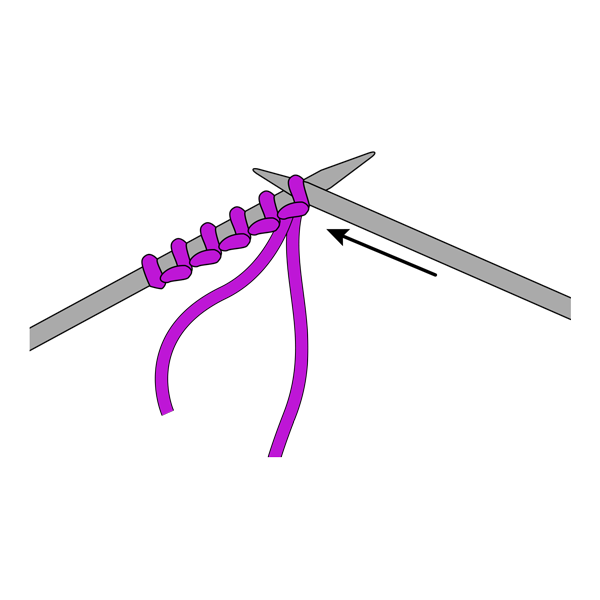 2 Insert the right needle from the back to front into the first stitch on the left needle. The right needle now is in front of the left with the yarn in front of the work.
2 Insert the right needle from the back to front into the first stitch on the left needle. The right needle now is in front of the left with the yarn in front of the work.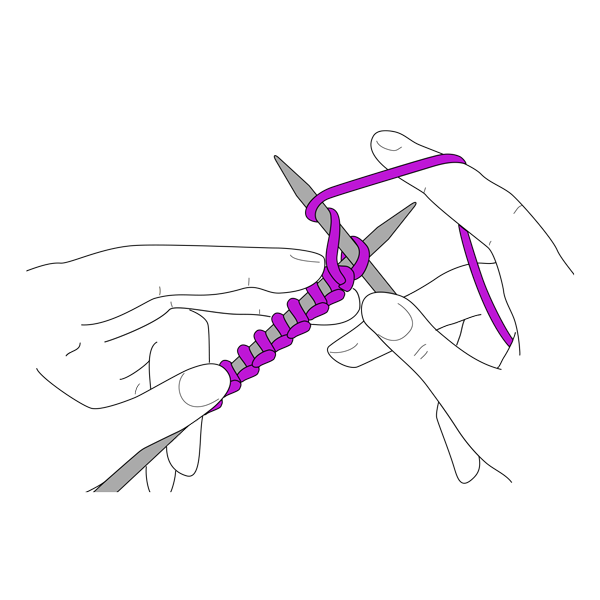 3 Wrap the yarn counterclockwise around the right needle with your right index finger.
3 Wrap the yarn counterclockwise around the right needle with your right index finger.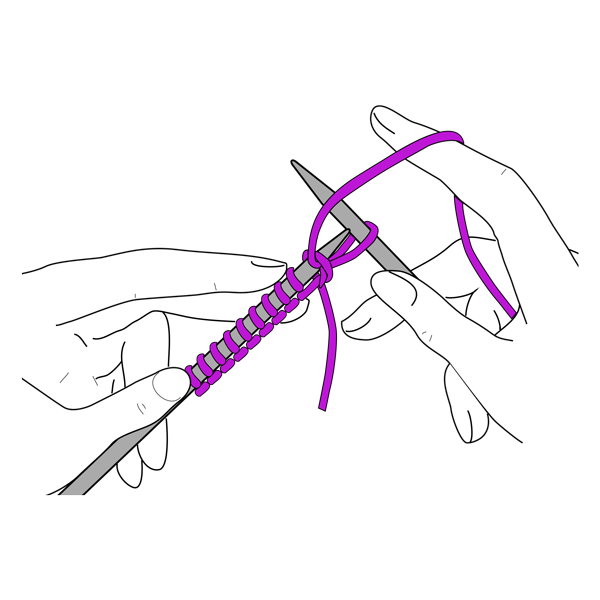 4 Draw the right needle and yarn backward through the stitch on the left needle to form a loop on the right needle.
4 Draw the right needle and yarn backward through the stitch on the left needle to form a loop on the right needle.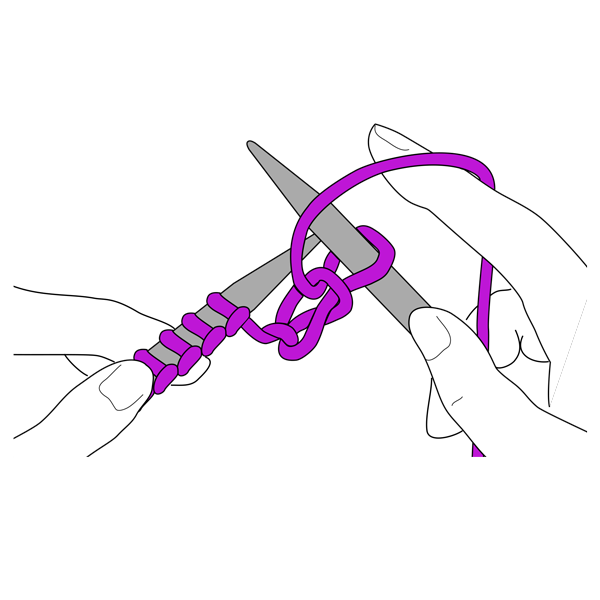 5 Slip the stitch off the left needle and onto the right one.
5 Slip the stitch off the left needle and onto the right one.BIND OFF
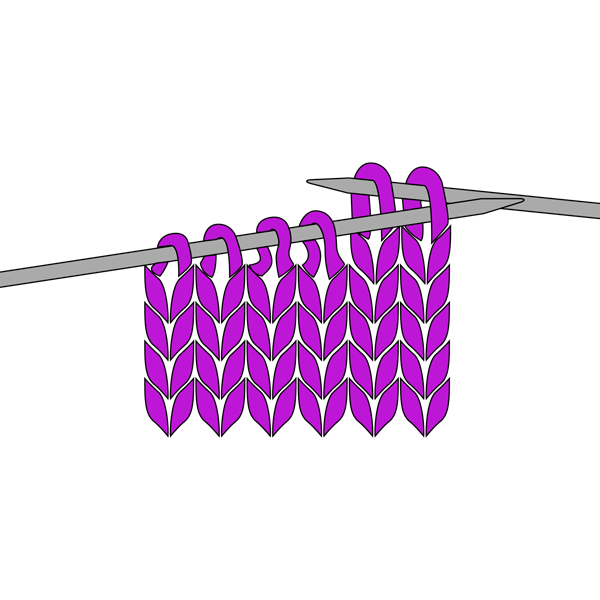 1 Knit two stitches. Insert the left needle into the first stitch on the right needle.
1 Knit two stitches. Insert the left needle into the first stitch on the right needle.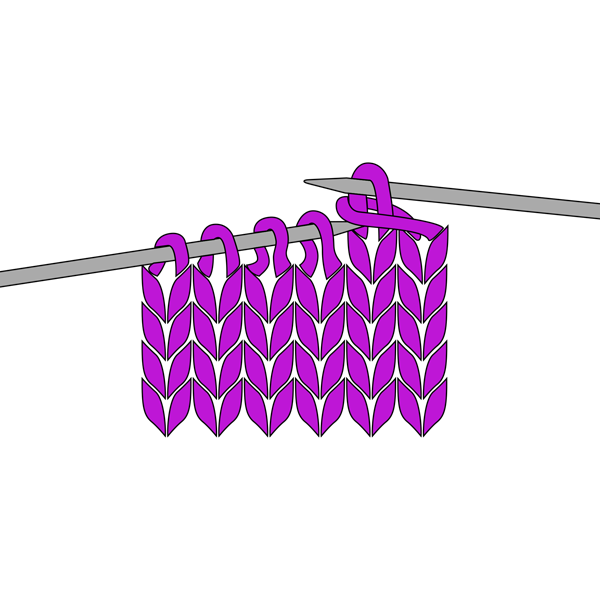 2 Pull this stitch over the second stitch and off the right needle.
2 Pull this stitch over the second stitch and off the right needle.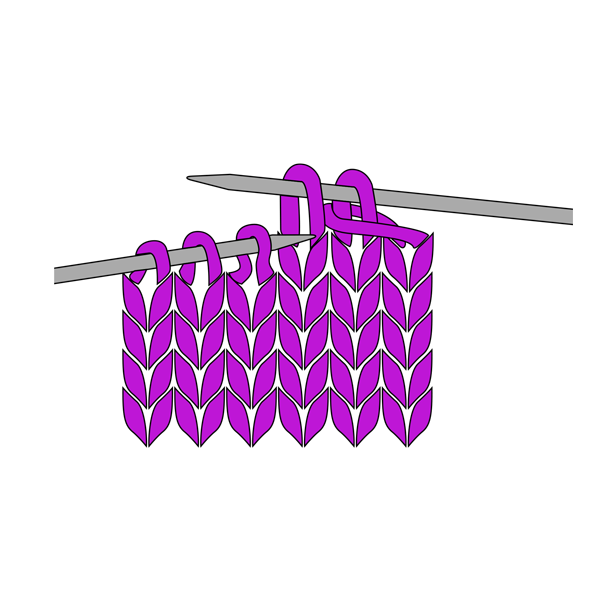 3 One stitch remains on the right needle as shown. Knit the next stitch.
3 One stitch remains on the right needle as shown. Knit the next stitch.THREE NEEDLE BIND OFF
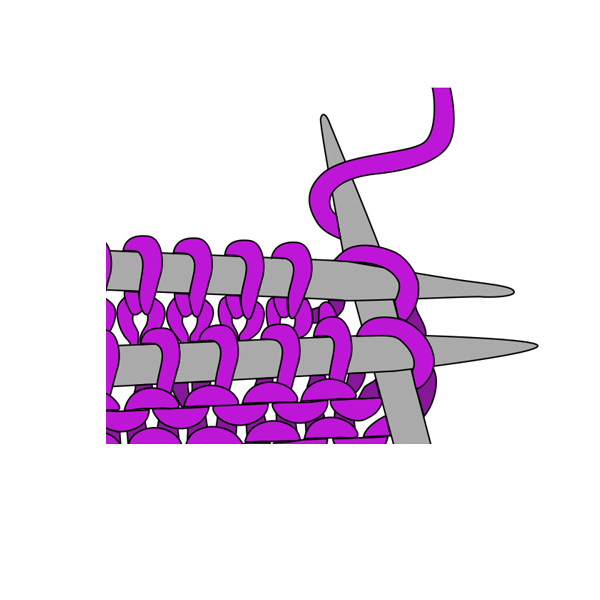 1 With the right side of the two pieces facing each other, and the needles parallel, insert a third needle knitwise into the first stitch of each needle. Wrap the yarn around the needle as if to knit.
1 With the right side of the two pieces facing each other, and the needles parallel, insert a third needle knitwise into the first stitch of each needle. Wrap the yarn around the needle as if to knit.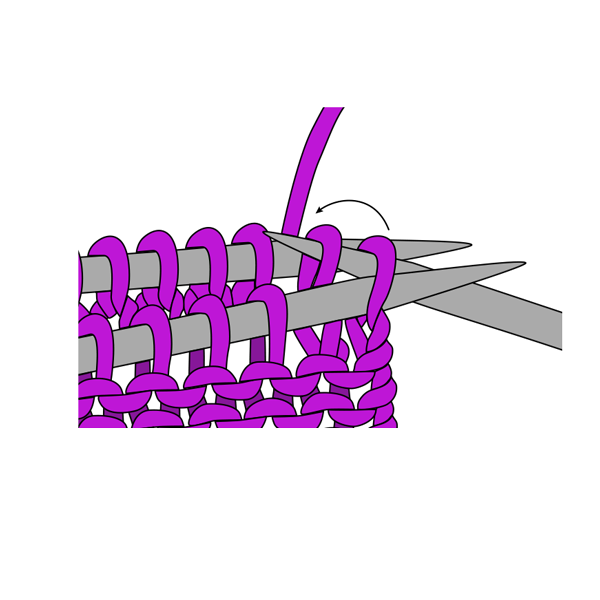 2 Knit these two stitches together and slip them off the needles. Knit the next two stitches together in the same way as shown.
2 Knit these two stitches together and slip them off the needles. Knit the next two stitches together in the same way as shown.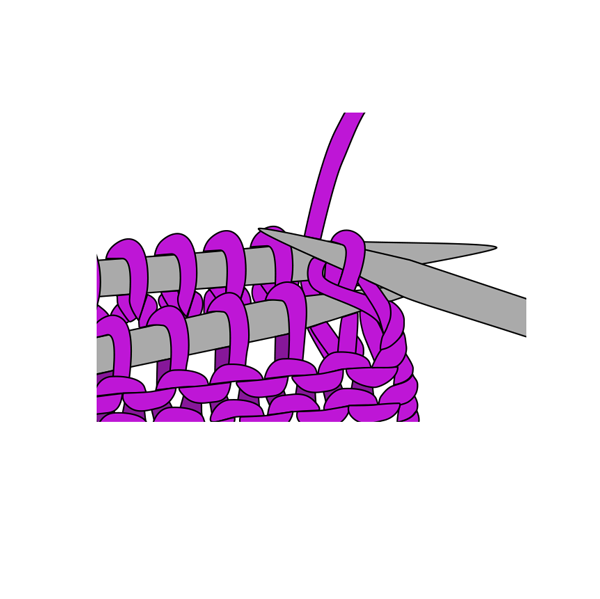 3 Slip the first stitch on the third needle over the second stitch and off the needle.
3 Slip the first stitch on the third needle over the second stitch and off the needle.

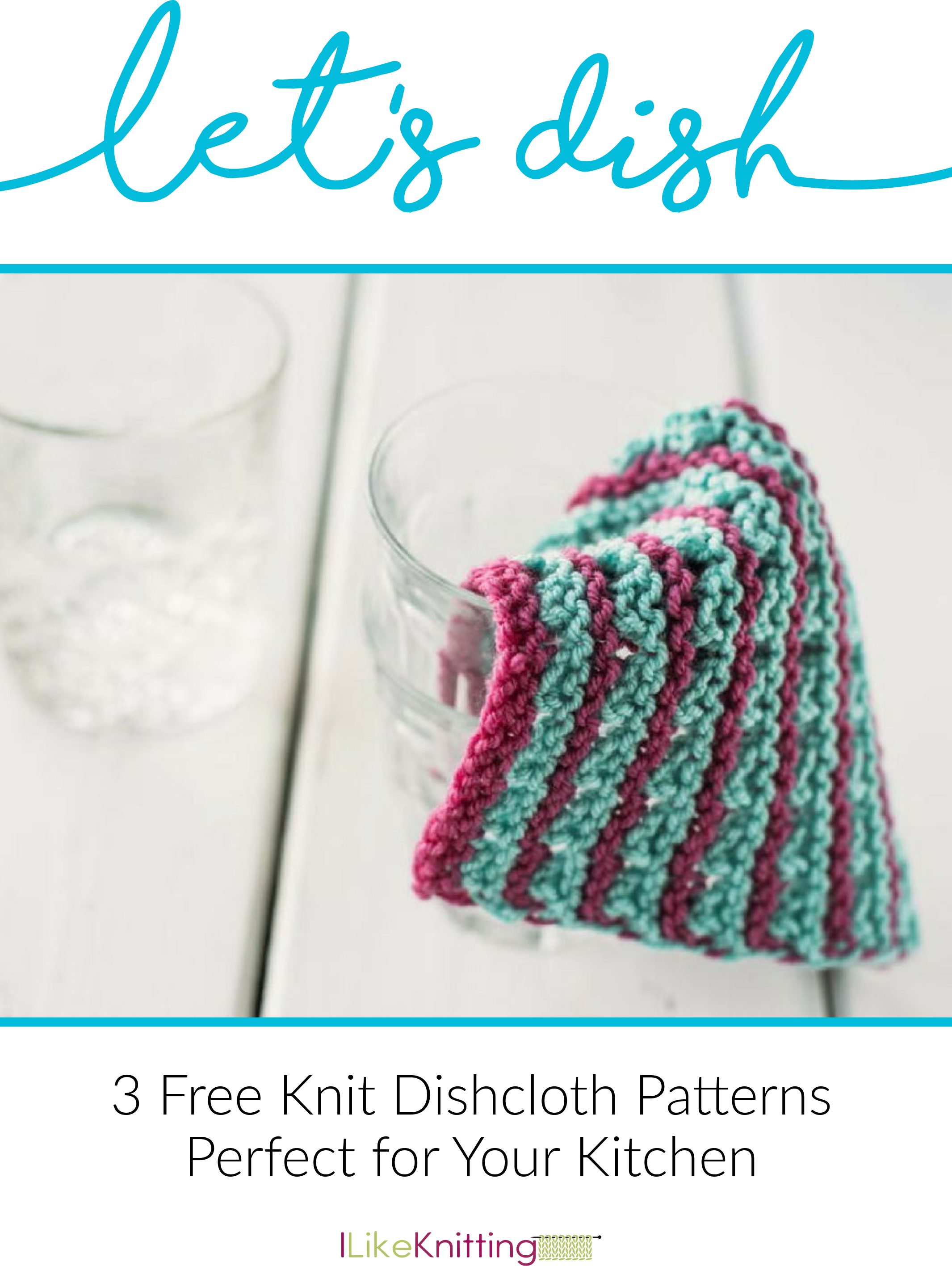
Hi! I don’t see any directions for changing colors. I’m sure I can google this, but find it odd that it was not included.
Thank you for the dishcloth patterns. I would like to comment that I do not like to knit with circular needles, ever. I was glad to see a straight needle pattern.
Thank you for the patterns.
I am just beginning again to knit to keep my hands busy!
If it helps anyone wondering where to save this great beginning book, you can save it to your Kindle or the Kindle app on your phone or tablet.!
Great save it’s exactly like you see on the site, but in PDF.
Wish me luck. I just made what I thought was gonna be a dish cloth.
But it’s actually a shoulder warmer
what does the abbreviation CLR mean in the Incredible dishcloth pattern stand for?
I believe CLR is shortened for “Color” so Color A and Color B for this dishcloth. Hope this helps! – Nicola, Editor
What is the purpose of doing a three-needle cast-off? Does it give a different edge?
The three-needle bind-off is a knitting technique used to join two pieces of knitting together with a strong, durable seam. It is often used for joining shoulders in a sweater or any other situation where you have two sets of live stitches that need to be joined together. The three-needle bind-off creates a neat, strong seam that is often considered more visually appealing than seaming with a tapestry needle. It forms a ridge on the wrong side of the fabric, which can add a decorative element or be used as a design feature. Additionally, it’s a relatively quick and efficient method for joining pieces, making it a popular choice for certain projects. Hope this helps!
I’m an advanced knitter and want to share your website with a granddaughter in another country but in your first beginner pattern it does not have a definition for Clr? Clr A and Clr B? What does this mean? Thank you.
I believe CLR is shortened for “Color” so Color A and Color B for this dishcloth. Hope this helps! – Nicola, Editor
Can you tell me what the abbreviation Clr means?
I believe CLR is shortened for “Color” so Color A and Color B for this dishcloth. Hope this helps! – Nicola, Editor
Thanks, I was looking through the definitions and trying to find CLR. Have a good day.
Thank you so much for the freebies. I’m looking forward to knitting them
Betty G.
I have the same question as Claudine and have not found an answer to it.
Claudine D. August 15, 2021
I have a question regarding the last pattern. Does the “1” in the brackets (k2tog, yo, 1) mean to knit 1? I’m guessing that it is a K1, but I want to make sure.
Thank you.
This is the pattern that the question is about INCREDIBLY EASY KNIT DISHCLOTH
by Heidi Gustad
Reply
There is also bind-off with a crochet hook
Which is not mentioned here.
Thank you so very much for this wonderful book on washcloths. These will make wonderful gifts. Thank you.
Question: In the case of binding off, does anyone have trouble pulling a stitch through? I lose stitches because the needle doesn’t catch on the stitch it is trying to pull through. I would welcome any advice here. Thank you for this site-it’s a great resource! Dianne A.
Pull the second stitch tight before and during the time you are picking up the first stitch and bringing it over.
Try using a crochet hook, it can give more control.
I was looking for dishcloth patterns. Thank you.
I have a question regarding the last pattern. Does the “1” in the brackets (k2tog, yo, 1) mean to knit 1? I’m guessing that it is a K1, but I want to make sure.
Thank you.
That’s a good question Claudine. My guess is that you’re right, but really it could be a purl. It’s hard to tell by the picture. I guess you could try either stitch to figure it out. My opinion… it’s just another error.
Dank je dat ik mag genieten van deze mooie creaties xx
Hello. Is there a way to make the Simple Moss Stitch Dishcloth, by Heidi Gustad, a little larger. It’s a beautiful pattern, but I like to use a slightly larger (maybe 7 x 7) dishcloth. I’m not experienced enough to know how to alter a size and still maintain the pattern. Thank you.
Hello! I’ve reached out to the designer for advice and she or I will reply as soon as possible. Thanks! – Nicola, Editor
There’s an excellent explanation at
https://www.dummies.com/article/home-auto-hobbies/crafts/knitting-crocheting/how-to-knit-moss-stitch-197603
Hello – My Grandmother taught me to knit when I was about 8. I used to take the bus to her house and spend the afternoon after school and learn to knit. When she passed, she willed to me her beautiful sewing chest. I am very proud of it and use it all the time. Have 3 lovely great-grand children and have been knitting for them. When Winter arrives, I’ll have the well outfitted with mittens and scarves. Best to everyone…Judy LaBuwi. Leesburg, Florida.
Thank you for this platform. I learned to knit when I was 4 years old in 1945 and have loved knitting every day since. Now retired and living alone I knit all day and night, only stopping for 4 meals daily! Glenys Little. Melbourne, Australia.
Hi I would get the deal but my province doesn’t come up on the list I live in England, my city is west Yorkshire, my county is bradford
Hi! Our customer service team can make sure everything is in order if you shoot them an email. We are happy to help! Thanks
Thank you for the dishcloth patterns. Recently I read an article and they were talking about doing away with your kitchen sponge and using a cloth/scrubber instead. It is eco friendly and cost effective as they can last for a very long time and are easily cleaned and disinfected. Not only are they good for the environment, they are easy on the pocket book, fun to make and are great gifts.
I am looking for the how to knit a cable tutorial which is stated above please tell me how to get it. Thanks
Hello! So sorry about that, for some reason it’s not working properly above. You can find the tutorial here: https://www.ilikeknitting.com/daily/previews/how-to-knit-a-simple-cable/
Happy knitting! – Nicola, Editor
I’m new to knitting, haven’t got a finished piece yet, because I couldn’t understand some instructions nor could I grasp the videos. But this website is awesome! The descriptions are very plain and understandable and I think I’m going to love coming here to look for information. So far it is more than I could have hoped for
Wow! Never knew about the three needle bind off. When will one use this method of binding off?
Hi Louisa! We have several patterns that use this technique if you wanted to take a look: https://www.ilikeknitting.com/search-results/?q=three+needle+bind+off&go=
Hope this helps! – Nicola, Editor
Hi Louisa I used the 3 needle cast of when grafting techniques are to be used as when knitting on circular needles on the underarm area of the sleeves as I have never learned the grafting technique. Hope I didn’t confuse you lol
Is there any reason one cannot use wool in these dish cloths?
Hi there! From our friends over at FaveCreafts.com: “Cotton yarns are best for making knit dishcloth patterns, but blends work just as well. … When exposed to too much water, wool can felt, destroying your pattern and yarn in the process. If cotton yarns are the best yarns for making dishcloths, wool is the worst.” https://www.favecrafts.com/Kitchen-Knits/Best-Yarn-for-Dishcloths
Hope that helps! – Nicola
Hi–I just discovered a dishcloth yarn that is not pure wool or cotton I believe, but washes and dries beautifully. It is called “Scrubby” yarn and is made by Red Heart. It has a slightly abrasive quality, so it could be used cosmetically to wash the face. It comes in a range of colors, including a sparkling yellow. Dianne
Thank you! Getting back into knitting!
Thank you I love it already! I love how easy it is to follow the pattern I Think I’ll sign my Granddaughter up too
How do I save patterns to My Library?
Hi Eleanor! At this time, we do not have a library feature that lets you store individual patterns — but it is something we are looking into! For now, I suggest printing the patterns, bookmarking them with your web browser’s tools, or using Pinterest. Hope that helps for now! – Nicola
Hi I take pictures on my fone an keep them there then write them out a few lines at one time
Thank you
Thank you very much for the fun patterns!!
I’m a new member of the I Like Knitting family! Thank you for this mini guide with beginner dishcloth patterns. I’m new to knitting and starting out slowly.
Great
Thank you for the great patterns